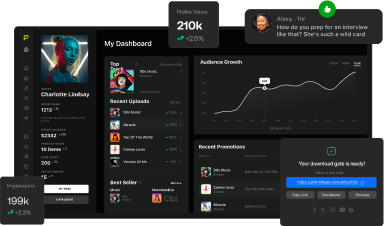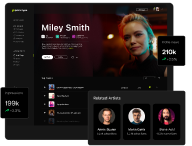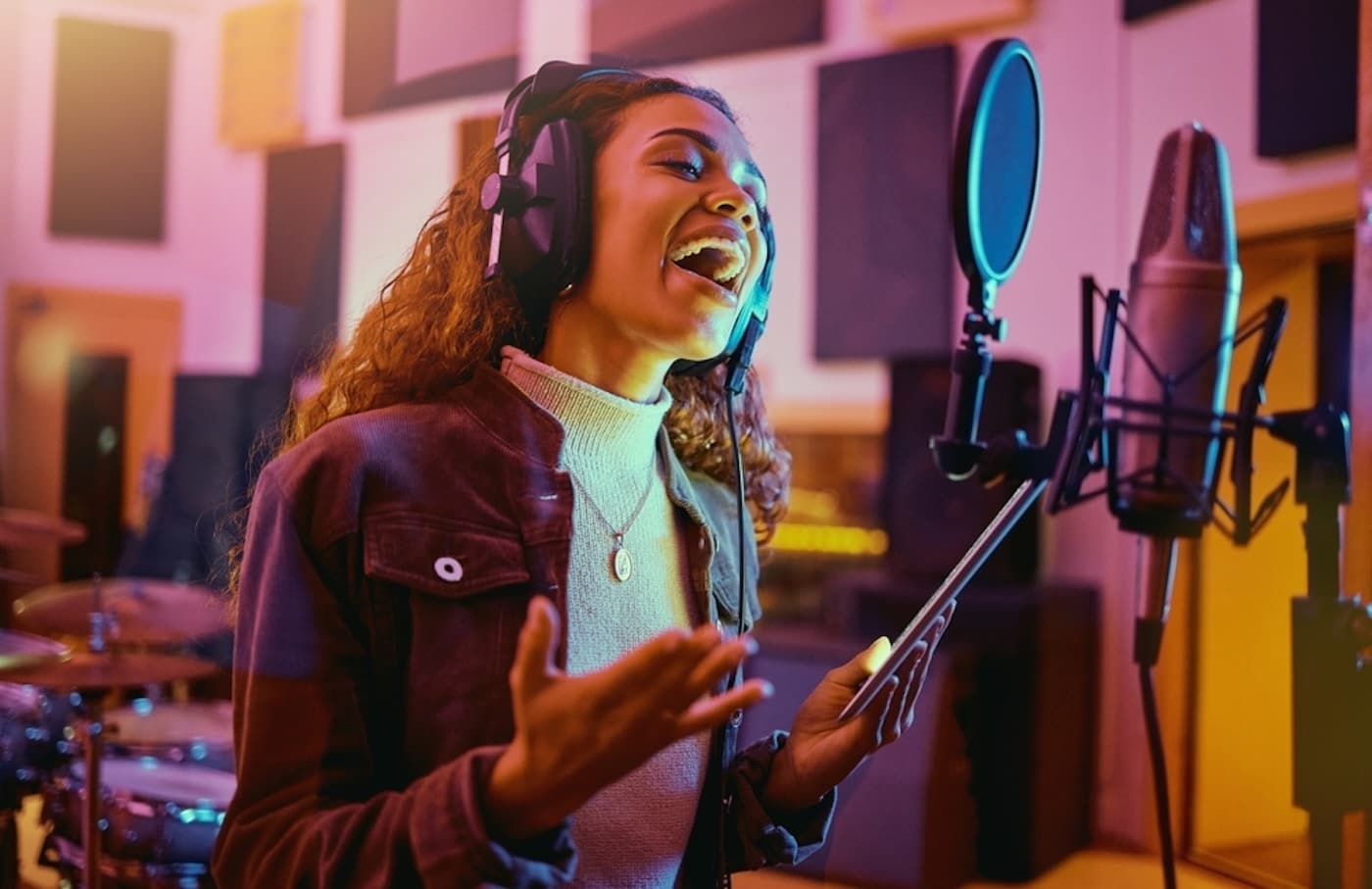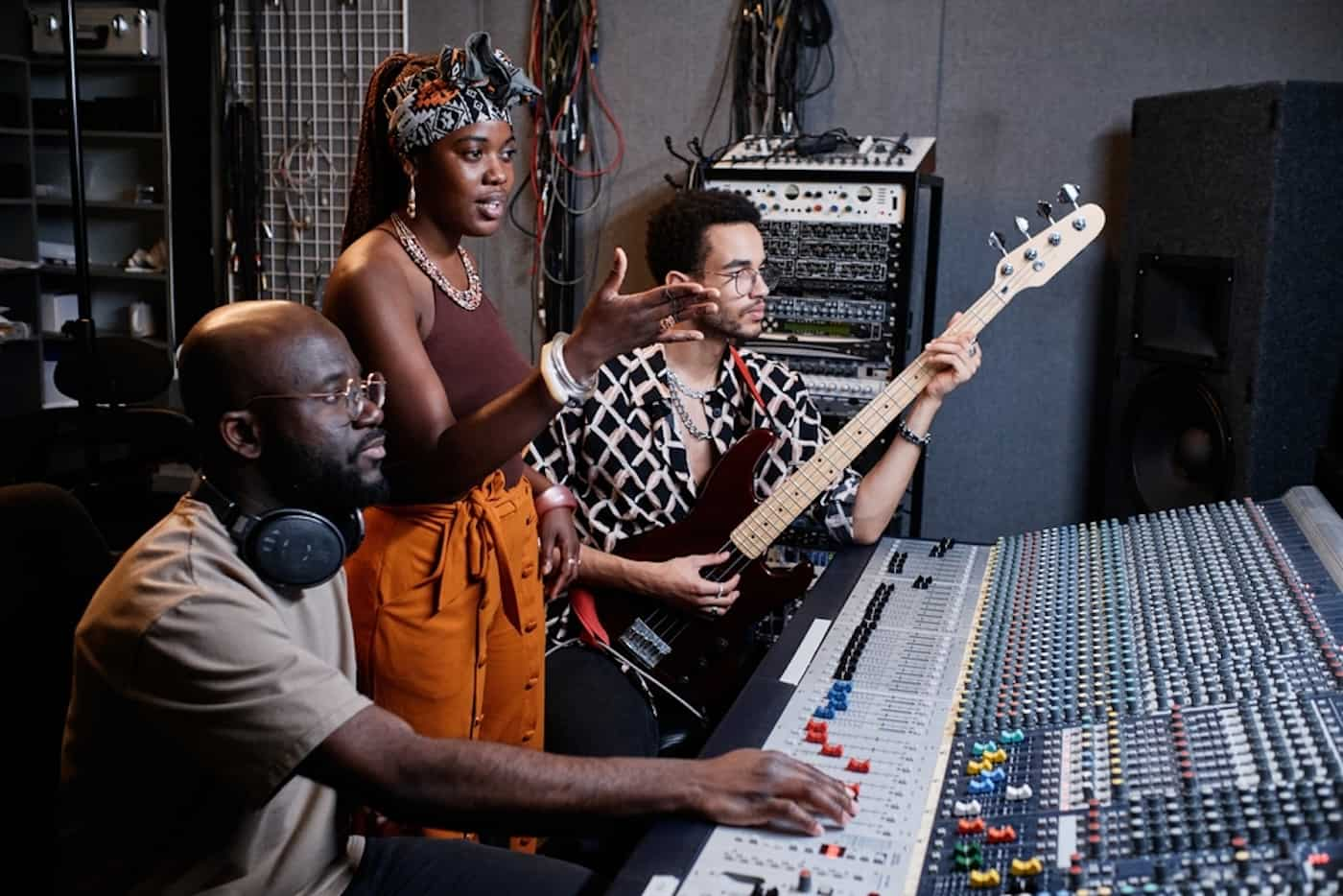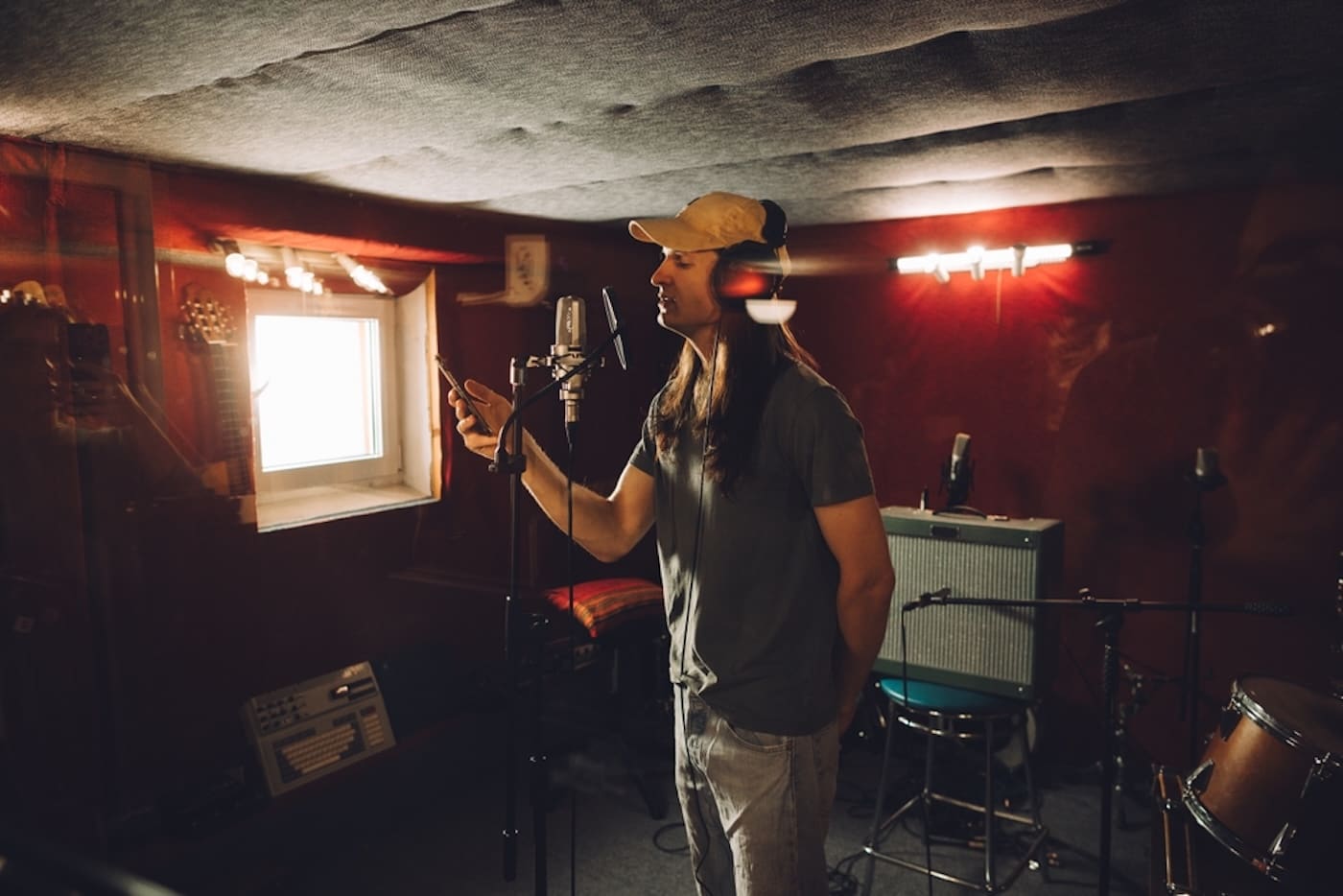
360 deals in music have become one of the most talked-about contract types in today’s industry.
As streaming and branding reshape how artists earn, labels now look beyond traditional record sales for revenue.
These contracts extend into touring, merchandise, endorsements, and other income streams, giving labels a share of nearly every part of an artist’s career.
With that in mind, this guide breaks down how 360 deals work, why they emerged, and what independent artists should know before signing one.
Get Early Access
To Promo Hype
What Is A 360 Deal In Music?
A 360 deal is a music industry contract that encompasses additional revenue streams beyond the standard recorded music split.
Also known as a multiple-rights agreement, a 360 deal contract incorporates revenue from a range of “non-recorded rights.”
In addition to making money from music, the record company can also profit from merchandise sales, artist tours, and other ancillary rights.
Understanding how 360 deals work is essential when starting a music career and landing a deal that reflects artists’ best interests.
Why 360 Deals Exist: The Evolution of Modern Record Deals
In the pre-digital era, traditional recording contracts focused primarily on collecting and distributing income from single, EP, and album sales.
The decline in physical media sales in the early 2000s prompted significant changes in how the music industry operates.
Under traditional record deals, artists’ revenue streams outside record sales were retained, giving them greater control over non-music earnings.
360 deals changed the landscape, with the record company taking a cut of revenue streams in exchange for more extensive artist support.
This new arrangement is not without controversy, with concerns around the degree of creative control companies have over an artist’s career.
As such, artists should negotiate deals with careful consideration for how the contract may impact their creative endeavors and goals.
Recommended read: The best music production software.
Who Typically Offers 360 Deals?
Whether you’re making money as a music producer or singer-songwriter, 360 deals are viable contracts for developing a career.
Here’s an overview of the kinds of companies that offer 360 music deals to songwriters, musicians, and producers:
Major Record Labels
Most of the major record labels looking for artists will expect them to sign a 360 deal to access their extensive resources.
In exchange for a cut of the artist’s music sales and other revenue streams, the major label offers access to finances and studio time.
Such labels rely on A&R professionals to identify new artists with potential to break through, investing heavily in their careers.
Indie Labels
While indie labels are less likely to offer 360 deals to signed artists, they’re not unknown to provide similar contracts in some cases.
Many of the best independent record labels offer artist-friendly terms, including higher royalty rates and less creative intervention.
Some artists opt to retain complete control over their revenue streams by starting a record label and self-publishing their music.
Concert Promotion & Live Entertainment Companies
One of the biggest challenges for emerging artists is getting gigs as musicians and building a reputation for strong performances.
Some of the larger corporate concert promotion companies offer 360 deals to rising stars in exchange for a share of their income.
In exchange, artists have access to the company’s core infrastructure, venues, and expertise in managing complex tours.
Entrepreneurs & Artist Management Firms
Another source of 360 deals is entrepreneurs and larger artist management companies, who are well–positioned to fund artists’ careers.
Such deals, also known as “across the board” deals, provide various career development services in exchange for revenue sharing.
It’s essential to understand how variable such deals can be, and to avoid exploitative arrangements that don’t represent the artist’s best interests.
Brands & Non-Entertainment Companies
The least common type of organization that offers 360 deals is non-entertainment companies and corporate brands.
Such contracts blur the distinction between 360 deals and sponsorships, with the artist’s image used to promote products or services.
An example is the arrangement between Activision and multiple artists, as seen through their involvement in the Guitar Hero video game franchise.
Related read: How to get signed to a record label.
Active Vs. Passive 360 Deals
The nature of contracts in 360 deals in the music industry is nuanced, shaping the extent to which labels participate in operations.
This degree of participation is typically determined by active or passive deal structures, each with different roles and revenue percentages.
Here’s an overview of each of these arrangements and how they affect the roles and responsibilities of artists and labels:
- Active 360 deals: In this arrangement, the label takes a hands-on approach to operations and management across multiple income streams. This draws on their internal infrastructure, resulting in a higher revenue share reflecting the additional responsibilities and processes.
- Passive 360 deals: For passive deals, the label’s role is primarily financial, with operational control and activities handled by the artist. Under this model, labels take a smaller percentage of revenue from activities outside their power, based on a pre-agreed share.
The terms of such 360 deals vary based on factors such as the artist’s career goals, level of fame, and existing third-party arrangements.
Advantages Of 360 Deals
While some 360 deal contracts might seem exploitative, they do confer benefits that allow artists to earn more money.
Here are some of the key benefits of 360 deals that incentivize artists to sign up for such contracts:
- Additional funding and resources: Signing a 360 deal opens up access to greater funding opportunities, from significant advances to financial support for music production projects. Labels then recoup this initial investment through royalties and other sources of the artist’s income.
- Access to record label resources: Such deals also allow artists to use the label’s extensive resources to polish tracks, such as mixing and mastering services. This support extends to other aspects of an artist’s career, including promotion and brand partnerships.
- Music industry guidance: Artists signed to a 360 deal receive support for their creative development and robust industry guidance. Such deals can result in significantly higher exposure, with labels submitting music to radio stations and other media outlets.
360 deal contracts also provide access to professional music marketing services to ensure the maximum possible reach to audiences.
Disadvantages Of 360 Deals
Before considering signing a 360 contract, artists should be aware of the potential drawbacks of such deals.
Let’s break down these potential downsides that should be considered before negotiating a record deal:
- Lower income through revenue sharing: The most obvious downside to 360 contracts is how they cut into artists’ income streams. In addition to the typical music royalties split, such deals also carve out merch money and other non-sales revenue.
- Reduction of creative control: In some instances, such deals can also inhibit the artist’s core creative vision, as labels make decisions about music production processes and composition.
- Handling complex contractual obligations: 360 contracts can be opaque for artists, who may struggle to navigate their complexities when negotiating a deal. This can lead to lower record royalties from album sales without a tradeoff that’s beneficial to their long-term career goals.
If you’re uncertain about any terms and conditions, consult a lawyer to clarify your concerns before signing a 360 contract.
Get Early Access
To Promo Hype
Key Terms and Clauses in 360 Record Deals
While there are no standard deals, certain factors are considered when developing a 360 contract between artists and labels.
Here are the key terms and clauses artists need to be aware of when negotiating a deal with a label:
- Exclusivity & Rights Ownership: Once signed to a label, the company holds exclusive recorded rights during the term of the agreement, subject to any third-party sharing provisions.
- Contract Duration & Options: The contract also stipulates the duration of any agreement, which can be based on a timeline or a specific number of album releases.
- Recording Budget & Recoupment Terms: A recording fund is typically included in such contracts, covering production costs and access to recording facilities.
- Advances & Upfront Payments: Upfront payments vary depending on the artist’s stature, with higher advance payments for those with a track record of delivering high record sales.
- Royalty Rates For Recording & Streaming: Record royalties also vary by artist status, with higher rates from mechanical and performance royalties than in traditional record deals. Labels then offset the difference through additional revenue streams outlined in the following steps.
- Music Publishing & Songwriting Revenue: In some deals, additional revenue sharing is provided through music publishing and songwriting arrangements.
- Touring Income & Live Performance Revenue: Revenue from touring and one-off live performances can also fall under 360 record deals when the label actively participates in events.
- Brand Sponsorships & Endorsement Deals: With access to music industry networks and corporations, 360 record deals can incorporate brand sponsorships and endorsement deals into revenue-sharing arrangements.
- Merchandise Rights & Sales Splits: The sale of artist-branded merch, such as clothing and posters, may also be included in how labels capitalize on artists’ monetization strategies.
- Cross-Collateralization Explained: This clause in a contract allows labels to recoup their investment across multiple streams and is applied to the entire deal structure.
You can negotiate with labels to ensure the most favorable terms and conditions are included in your contract before signing up.
How To Negotiate A 360 Record Contract
Creating an impressive electronic press kit is the first step toward landing a deal with a record company and making money from music.
Once you’re in a position to negotiate a 360 record deal, consider the following factors to get the best possible results:
- Clarify revenue splits: 360 record deals encompass multiple revenue sources, so clarifying the precise splits for each source is the first important step for negotiation.
- Consider carve-outs: If you want to exclude existing or unrelated non-music activities from the contract, clearly state them during negotiations.
- Seek legal advice: Artists often lack business acumen or legal experience, so seeking advice from an attorney can help them navigate confusing contracts.
By researching music copyright laws and clarifying your rights, you can negotiate an exclusive contract that delivers optimal income streams.
Why Record Labels Push 360 Deals
The initial impetus for the evolution of 360 record deals stemmed from declining record sales, as labels sought new income streams.
Today, labels demand greater access to revenue through music licensing, touring, and other creative endeavors.
This ensures their upfront investment isn’t compromised by underperforming sales and yields higher profits through diversification.
That said, 360 deals continue to evolve, with many artists pushing back and demanding greater control over their masters and publishing rights.
Further reading: The 10 most successful independent artists.
Most Popular Artists Who Signed 360 Deals
While 360 record contracts have their pros and cons, many of the best music producers of all time have signed up to the format.
Here are some notable household names who have signed highly lucrative deals with major labels using this contract approach.
1. Kanye West
One of the most notable record deals for a major artist was Kanye West’s signing with Universal Music Group.
The deal shared many elements of a standard 360 record deal, although West’s retention of master ownership added a layer of nuance.
2. Madonna
In 2007, the pop star Madonna signed a deal with Live Nation Entertainment, which serves as an example of how 360-style deals impact touring.
The 10-year deal was worth an estimated $120 million and covered recording, merchandise sales, and other rights.
3. Robbie Williams
British pop singer Robbie Williams made headlines in 2002 after signing with EMI and setting the stage for the 360 model.
A comprehensive multi-platform deal, it saw EMI take a 25% minority stake and founded a new company to manage Williams’s activities.
4. Drake
Drake’s impressive and lucrative deal with UMG is another headline-grabbing moment in the history of music industry contracts.
It adopted a more artist-friendly structure that allowed Drake to retain ownership of the masters while licensing them to the label.
5. Jay-Z
Like Madonna, Jay-Z made industry waves when he signed with Live Nation in 2008, financing his recordings and tours.
The deal, spanning 10 years, was valued at around $150 million and granted Live Nation comprehensive rights.
Alternatives to 360 Deals for Independent Artists
The all-encompassing terms of 360 record deals sometimes sound like an awful idea to new artists looking to retain creative control.
If you’d prefer to avoid exploring such deals as an independent artist, consider these 360 record deal alternatives:
- Self-releasing/DIY approach: Indie artists with a home recording studio can cut out the middleman by creating and distributing their work through independent channels.
- Standard record deals: Opting for a traditional record company deal is a solid compromise that provides access to resources without sacrificing as much revenue.
- Upstream deals: Succeeding on an independent label can lead to major label attention and access to professional music promotion and distribution resources.
With easy-to-use digital music distribution services available, artists can exercise greater control over their work while retaining independence.
Read this next: The 10 best music marketing tools.
360 Deal FAQs
360 deal contracts can be complex, but these FAQs will shed more light on how they work and whether they’re right for you.
Is a 360 deal good or bad?
The pros and cons of 360 record deals depend on the contract’s specifics and are influenced by the artist’s career stage and leverage.
This makes robust negotiation imperative to landing a deal that delivers funding and resources without compromising earning potential.
What percentage is a 360 deal?
360 record deal percentages vary, with a general range between 15% and 25% of the artist’s income, depending on the deal.
Such percentages also vary by income source, with merchandise sales and live performance revenue sharing between 10% and 50%.
Are 360 deals fair for new artists?
New artists looking to sign a 360 deal are unlikely to secure the same favorable terms as established acts.
Labels are more likely to invest substantially in artists with a proven track record of consistent income generation.
Summary
Understanding how 360 deals work is crucial for any artist navigating today’s complex music industry.
These contracts can offer major opportunities through funding, resources, and exposure, but they also risk limiting creative control and long-term earnings.
By knowing your rights, asking the right questions, and getting legal support, you can negotiate a deal that truly serves your artistic and financial goals.
Get Early Access
To Promo Hype
Join Promo Hype
